Blog
5 Soviet Satirical caricatures explained
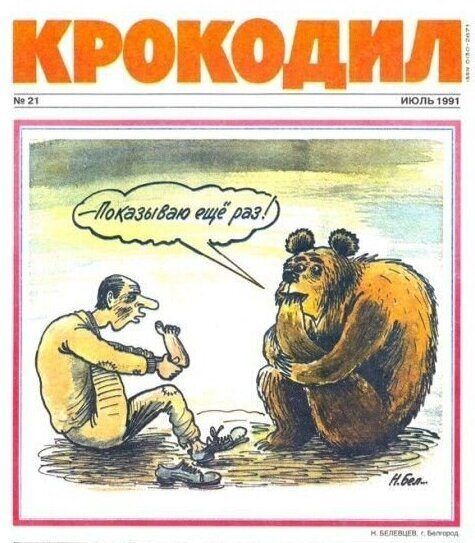
Learning Russian language is not simply learning painstakingly grammar rules and words that may or may not be relevant to you. If it were that straightforward, the Tower of Babel would be completed… Learning any foreign language entails thorough understanding of the culture of the people whose language you’re learning, particularly, understanding its humour.
Russian humour is peculiar they say. Do you want to study some examples of Russian satire? One good place to start is a famous satirical magazine called “Krokodil”. It was first published in 1922 and discontinued in 2000 after the 1991 dissolution of the Soviet Union.
As you can imagine, during USSR period political satire was quite a dangerous affair. However, Krokodil was given considerable freedom to lampoon political figures and events. Typical and safe topics for this were the lack of initiative and creativity promoted by the style of an average Soviet middle-bureaucrat, and the problems produced by drinking on the job by Soviet workers. Krokodil also ridiculed capitalist countries and attacked political, ethnic and religious groups that apparently opposed the Soviet system.
The topic of Soviet satire is a huge subject from which you can learn a lot about the life in the USSR, or at least, the aspects of life that was allowed to be criticised.
Without further ado, let’s look at some of the examples of fascinating caricatures.
1. “About Russian Mafia”
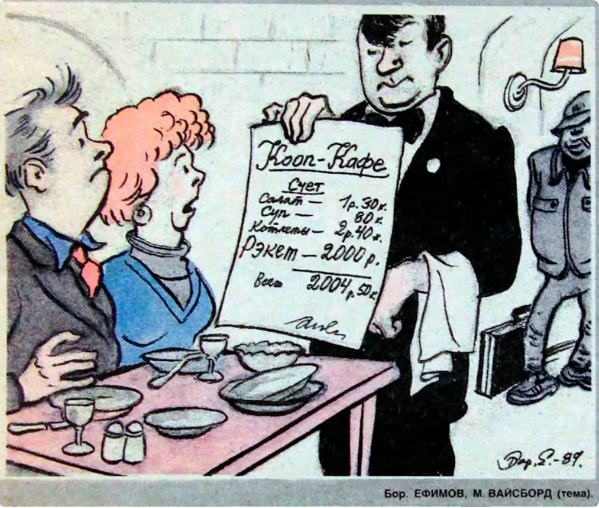
In the 90’s dissolution of the USSR began. Boris Yeltsin was elected President of Russian in June 1991. Yeltsin announced that Russia would proceed with radical reforms, including market-oriented reform. The transition of the world’s largest state-controlled economy to a market-oriented economy would have been extremely difficult. And it was. Elderly and theworking-class people were the losers. Among the winners were the new class of entrepreneurs and black marketeers that had emerged under Mikhail Gorbachov’s perestroika. Criminal elements started to emerge, such as, so called “Рэкет”, or in other words is Mafia. They would raid newly emerging small businesses and demand payments for “protection”. These payments are being ridiculed in this caricature. The waiter is showing a couple a menu where amongst reasonably-priced food items, you can see a very high “Рэкет” tax. It shows how the free-economy couldn’t function in Russia in the 90’s creating one of the major obstacles to the reform.
2. “More on economical reforms”
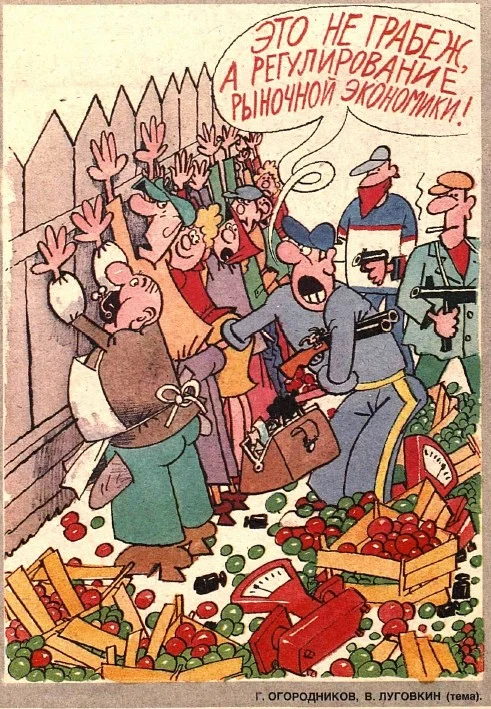
More on the same topic of the birth of market economy in Russia in the 90’s. The caricature depicts simple folk, working-class people who are trying to run their own business of selling vegetables on a market. They’re being robbed by a gang of thugs. The writing says, “It’s not a robbery, it’s a regulation of the market economy “.
Search Google for more caricatures from “Krokodil”, see if can now understand the message and the satire.
3. “Lost Generation”
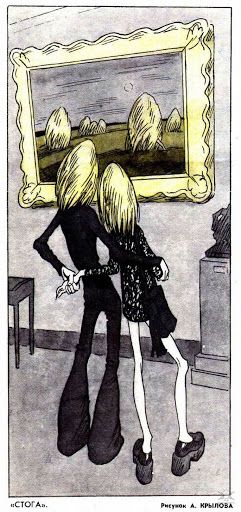
Many people born in 1970’s to a good Soviet family lost their identity and a sense of belonging after the collapse of the USSR. The Soviet Union collapsed, nothing new was built on its ruins, the transition was not natural and smooth, it was more like a shock therapy. Today you watch one channel, tomorrow they switch the channel and forcing you to watch it. Young people had nowhere to turn to, no common ground to stand on. Hence a huge influence of Western culture that was firmly established in many countries. The problem was, it was like trying to put on someone else’s shirt, someone who’s built differently – it just didn’t fit. Russia lost its uniqueness and its tradition. The whole generation was lost with it.
The Series representing the lost generation of the 90’s and how the views of the youth clashed with old generation’s views is still very relevant even today in 2020.
4. “More on lost generation”
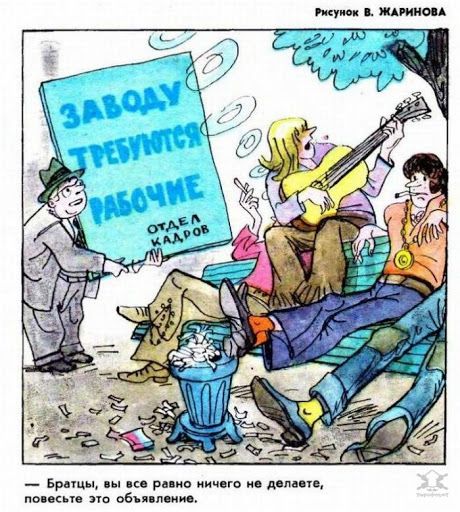
More on the topic of “Lost Generation” – The writing under the picture says, “Guys, since you’re loitering about anyway, can you put this advert up?”
The writing on the ad says,”Factory looking for workers. HR”
No comments…
5. “Alcoholism”
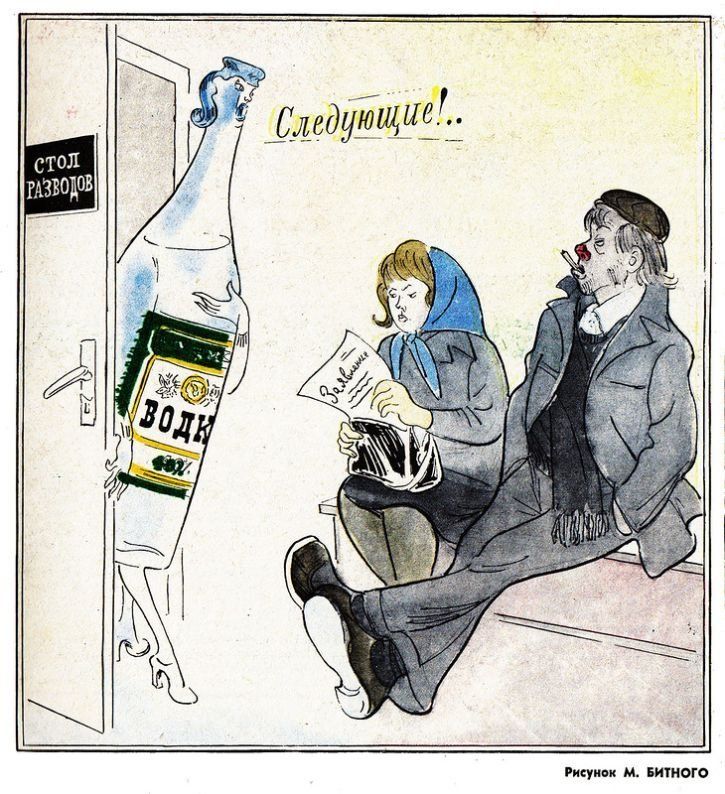
Alcoholism was and is the one of the biggest problems in Russia. No amount of anti-alcoholism measures have improved the sad statistics – alcohol consumption of alcohol is highest in the world – 15.76 litres per/capita is consumed a year.
Needless to say, this problem tends to worsen during economic turmoil which was the whole of history of Russia.
Loss of control, lack of financial stability, low prices of vodka most certainly stimulated the appetite for hard sipping liquor.
Alcoholism destroys families, economy and moral.
The series on alcoholism is very well presented in “Krokodil”, here’s one example. A couple is sitting in a registry office to file for divorce. She is a young woman and he’s an alcoholic. The officer opening the door is a bottle of vodka. Enough said. Very clever…
There’re many other topics that are presented in this wonderful magazine! For example, politics, health, lack of creativity, education. If you take time to search and read cartoons, you will find that you’re able to understand Russian language so much better than before.
If you have any questions, suggestions or would like to learn Russian, please, email us.
Contact info@russianlanguagecentre.co.uk for more info.
© 2020 Russian Language Centre. All rights reserved.